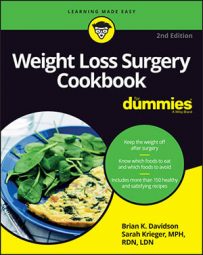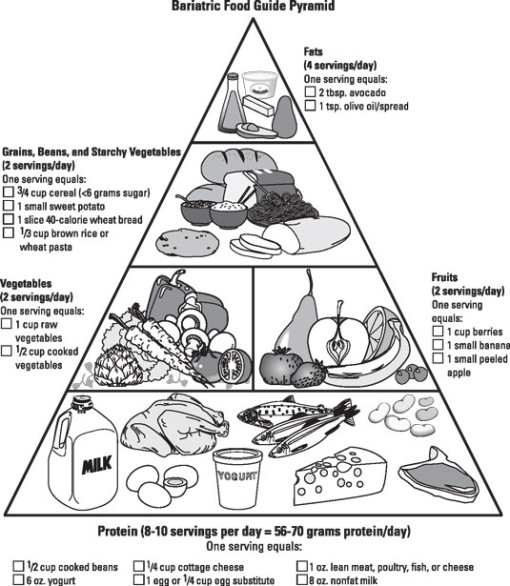Determining an accurate portion
Initially you need to weigh or measure all of your food in order to learn how to take care of your pouch. But as time goes on, measuring is still important. Researchers estimate that most people underestimate their portion sizes by as much as 25 percent, which can really add up.Stay honest with yourself about the calories you take in. A time will come when you think you know what 3/4 cup of cereal looks like in your bowl and you don't have to measure each time. However, should you become that confident, at least check yourself periodically to make sure you're not experiencing the dreaded "portion creep." And if you eat from a bowl that measures one cup, it will be easier to monitor portion sizes.
Sometimes it isn't feasible to measure or weigh your foods (like when you go out to eat). Here's a guide so that you can visualize what a portion looks like:
- 1 cup cereal = a baseball
- 1/2 cup cooked or raw vegetables = a baseball
- 1 ounce or 2 tablespoons avocado or peanut butter = a golf ball
- 1 tablespoon olive oil, salad dressing, or mayonnaise = a poker chip
- 3 ounces chicken or meat = a deck of cards
- 3 ounces fish = a checkbook
- 1 slice of bread = an iPhone
- 1 baked or sweet potato = a computer mouse
Estimating the size of your meals
The Japanese have a saying: hara hachi bunme, which means "eat until you are 80 percent full." If you take smaller bites, eat slower, and use internal cues instead of external ones, you'll enjoy your food more and feel satisfied sooner.Your surgeon or dietitian will recommend a calorie level for you to adhere to, and it varies from practitioner to practitioner. Men may be put on a general level of 1,300 to 1,500 calories and women at 1,200 to 1,400, or your surgeon may have you breathe into a small machine to see how many calories you actually require a day. Whatever the case, follow the recommendation.
You may also be given a meal plan to follow. While some plans require only three meals a day, some include two or three small snacks. A typical menu with three snacks may look something like this:
- Breakfast
- 1/2 small banana
- 1 scrambled egg
- 1/2 slice whole-grain toast
- 1 teaspoon margarine
- Midmorning snack
- Protein shake or 1 cup skim milk
- Lunch
- 2 ounces baked fish
- 1 small sweet potato
- 1/2 cup green beans
- 1/2 apple
- Midafternoon snack
- Protein shake or 1/2 cup sugar-free, fat-free pudding
- Dinner
- 3 ounces chicken
- 1⁄3 cup brown rice
- 1/2 cup stir-fry vegetables prepared with 1 teaspoon olive oil
- 1/2 cup berries
- Evening snack
- 6 ounces sugar-free, fat-free yogurt
No liquids are included in the meals. To keep from overfilling your pouch, you need to continue to observe the "no drinking with meals" rule. Stop at least 5 to 10 minutes before you eat, and do not drink for 30 minutes after you finish.
You may also have noticed there is no junk food in the menu. Remember, because you can't eat as much, it is very important that the foods you eat are nutrient rich. Foods like the ones in the menu above give you more nutrition bang for your calorie buck!You are not required to finish your meals. Listen to your body, and don't eat until you feel pressure or fullness in your chest or abdomen, signaling you may be ready to vomit.
You may have times when you simply aren't hungry (and you may really enjoy that feeling), but don't skip meals or forget to eat. You need to get enough nutrients so you stay healthy. And believe it or not, not eating enough can also slow down your weight loss. When you don't eat enough calories, your body goes into self-preservation mode and becomes much more efficient at hanging on to the fat it already has.


